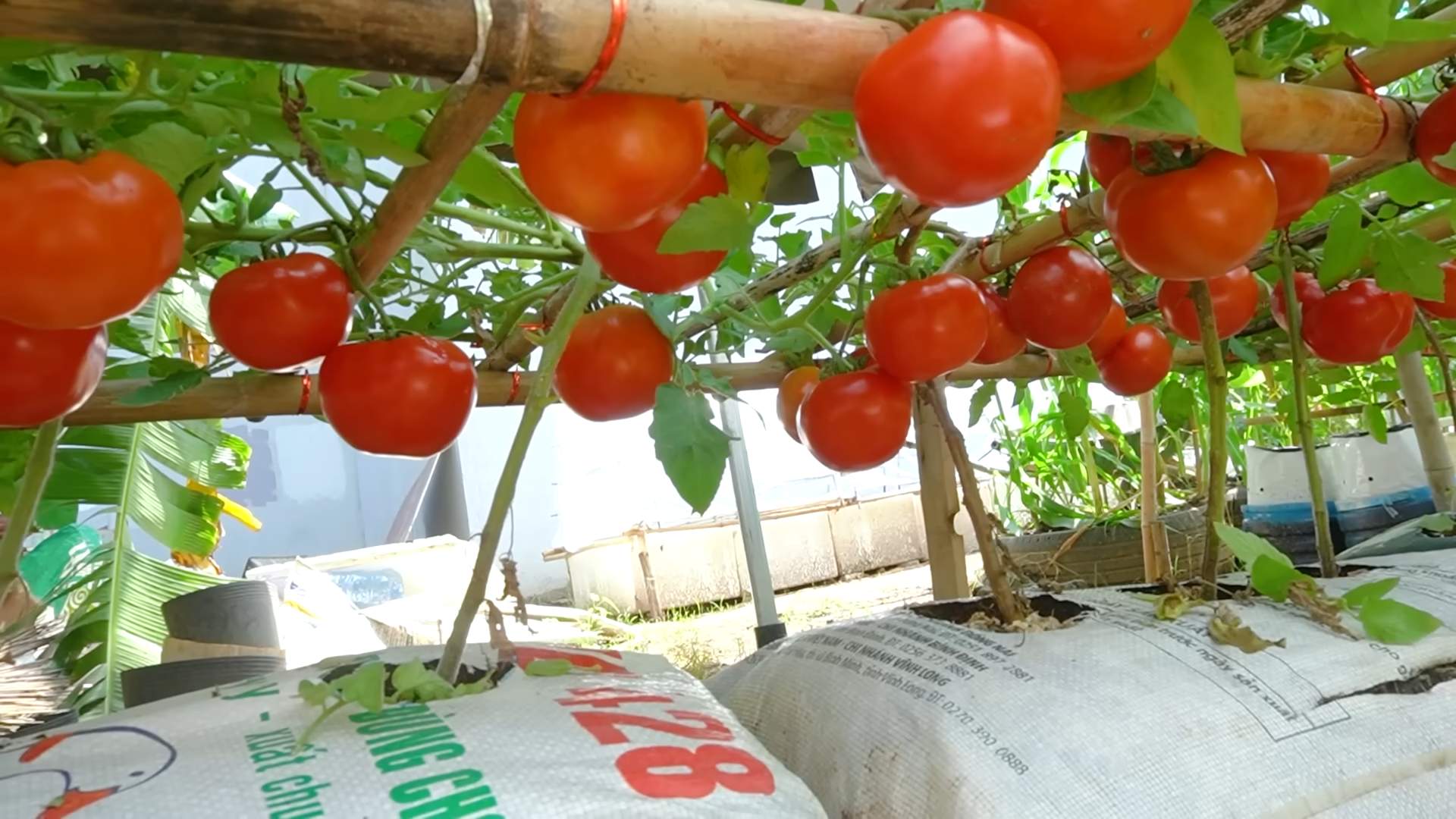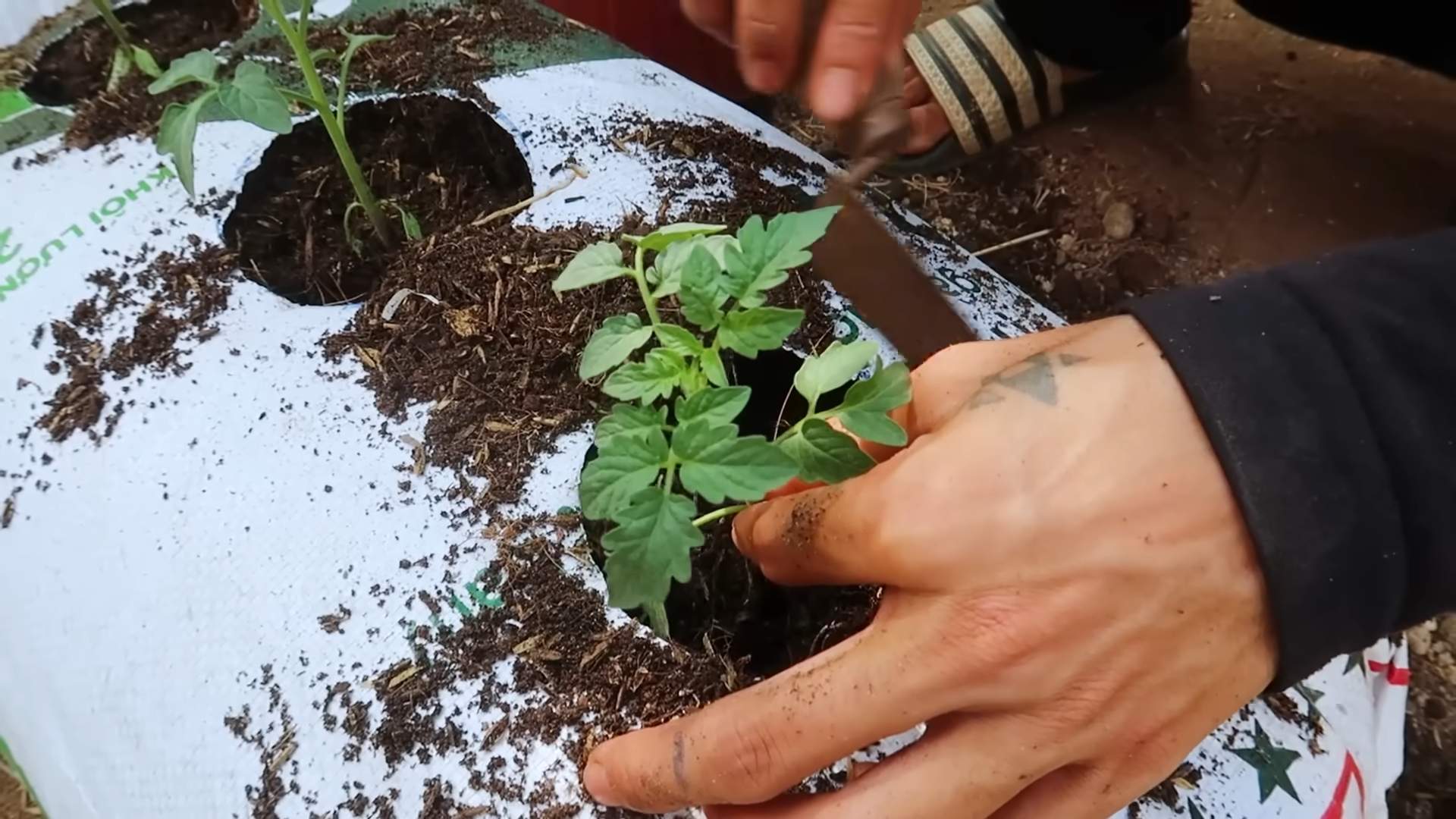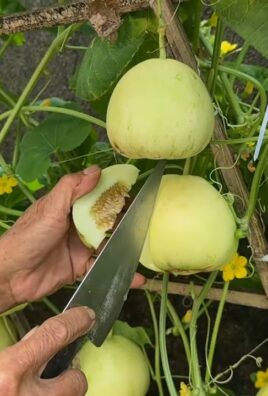Growing tomatoes at home can feel like a daunting task, but trust me, it’s more rewarding than you might think! Imagine biting into a juicy, sun-ripened tomato, bursting with flavor, that you nurtured from a tiny seed right in your own backyard. Forget those bland, store-bought tomatoes – we’re talking about a taste sensation that’s simply unmatched.
For centuries, tomatoes have held a special place in cultures around the world. Originating in South America, they were initially met with suspicion in Europe, but eventually became a culinary staple, especially in Italian cuisine. Think of the vibrant sauces, the refreshing salads, and the comforting soups – all thanks to this versatile fruit (yes, it’s technically a fruit!).
But why should you bother growing tomatoes at home? Well, besides the incredible flavor, it’s a fantastic way to connect with nature, reduce your carbon footprint, and save money on groceries. Plus, it’s incredibly satisfying to watch your plants thrive and produce delicious fruit. In this article, I’m going to share some of my favorite DIY tricks and hacks to help you cultivate a bountiful tomato harvest, even if you have limited space or experience. Get ready to unleash your inner gardener and enjoy the taste of homegrown goodness!

Growing Tomatoes in Your Own Garden: How to Succeed!
Hello dear garden friends! I love harvesting fresh, juicy tomatoes directly from my own garden. Nothing tastes better! And the best part: it’s not as hard as you might think. I’ll show you how you can successfully grow your own tomatoes with a few simple tips and tricks. Let’s get started!
Preparation: The Cornerstone for a Bountiful Harvest
Before we start the actual planting, we need to make a few important preparations. It’s like cooking: the right ingredients and good preparation are key!
- Choosing the right variety: There are countless tomato varieties, from small cherry tomatoes to huge beefsteak tomatoes. Think about which variety you like best and which is best suited to your garden. Some varieties are more robust and resistant to diseases than others. It’s best to check with a specialist retailer or online to see which varieties thrive in your region. I personally like a mix of different varieties, so I always have a colorful diversity on my plate.
- The right location: Tomatoes love the sun! Find a sunny spot in your garden that gets at least 6-8 hours of sun a day. The location should also be protected from the wind, as strong winds can damage the plants.
- Soil conditions: Tomatoes need loose, humus-rich, and well-draining soil. If your soil is very clayey, you can improve it with compost, sand, or potting soil. A slightly acidic pH (between 6 and 7) is ideal.
- Starting indoors: To give the tomatoes a head start, you can start them indoors from February or March. This gives them a growth advantage so you can harvest earlier.
Sowing and Starting Seeds: From Seed to Small Plant
Now let’s get down to business! We’ll sow the tomato seeds and grow small, strong seedlings.
1. Sowing:
Fill small seedling pots or a seed tray with seed starting mix. Press the soil down lightly and place 2-3 tomato seeds per pot or cell. Cover the seeds with a thin layer of soil (approx. 0.5 cm) and gently moisten the soil with a spray bottle.
2. Germination:
Place the seedling pots in a warm, bright place (e.g., on a windowsill) and keep the soil moist but not wet. A temperature of 20-25°C is ideal for germination. After about 1-2 weeks, the first seedlings should be visible.
3. Pricking Out:
As soon as the seedlings have developed their first true leaves (after the cotyledons), it’s time to prick them out. This means you carefully take the small seedlings out of the seed tray and transplant them into individual pots. Be careful not to damage the roots. It’s best to use a dibber or a spoon for this.
4. Care:
Water the young tomato plants regularly, but avoid waterlogging. Fertilize them every 2-3 weeks with a special tomato fertilizer. Rotate the pots regularly so the plants grow evenly and don’t bend towards the light.
Planting Out: Off to the Outdoors!
As soon as the tomato plants are strong enough and there is no more danger of frost (usually from mid-May), they can be planted outdoors.
1. Preparing the bed:
Loosen the soil in the bed thoroughly and remove weeds. Mix compost or organic fertilizer into the soil to enrich it with nutrients.
2. Planting:
Dig planting holes that are slightly larger than the root balls of the tomato plants. Carefully place the plants in the holes and fill them with soil. Press the soil down lightly and water the plants thoroughly.
3. Spacing:
Pay attention to the correct planting distance. Depending on the variety, the plants should be 50-80 cm apart. This gives them enough space to grow and get enough light.
4. Support:
Tomato plants need support to keep from falling over. Use tomato stakes, spiral stakes, or a trellis for this. Tie the plants regularly to the support so they grow stable. I prefer spiral stakes because they give the plants enough support and are easy to install.
Care During the Growth Phase: Watering, Fertilizing, Pruning
For your tomato plants to thrive and bear lots of fruit, regular care is important.
1. Watering:
Tomatoes need regular water, especially during the hot summer months. It’s best to water the plants in the morning or evening when the sun is not as strong. Avoid watering the leaves, as this can encourage fungal diseases. Instead, water directly at the roots.
2. Fertilizing:
Tomatoes are heavy feeders and need a lot of nutrients. Fertilize the plants regularly with a special tomato fertilizer. Start about 2-3 weeks after planting out and repeat the fertilization every 2-3 weeks. Pay attention to the dosage instructions of the fertilizer.
3. Pruning Suckers:
Pruning suckers is an important measure to increase the harvest. This involves regularly removing the side shoots (suckers) that form in the leaf axils. This allows the plant to concentrate on forming fruit and not be weakened by unnecessary shoots. It’s best to break off the suckers with your fingers while they are still small.
4. Mulching:
A layer of mulch made of straw, grass clippings, or wood chips helps to keep the soil moist, suppress weeds, and regulate the soil temperature.
5. Diseases and Pests:
Watch for signs of diseases or pests. The most common problems with tomatoes are late blight, early blight, aphids, and whiteflies. If necessary, you can use organic plant protection products. Good ventilation of the plants and avoiding waterlogging helps as a preventive measure.
The Harvest: The Reward for Your Hard Work
Finally, the time has come! The tomatoes are ripe and can be harvested.
1. The right time:
Tomatoes are ripe when they have reached their typical color (red, yellow, orange, etc.) and are slightly soft. They should detach easily from the stem.
2. Harvesting:
Gently pick the ripe tomatoes. Don’t leave them on the plant for too long, as they can burst.
3. Storage:
Fresh tomatoes taste best straight from the vine. If you need to store them, it’s best to keep them at room temperature. They lose flavor in the refrigerator.
Additional Tips for a Successful Tomato Harvest
Early prevention: Treat your tomato plants early with organic plant protection products to prevent diseases and pests.
Regular watering: Tomatoes need enough water, especially during fruit formation. Make sure the soil is always moist, but avoid waterlogging.
Good ventilation: Ensure good ventilation of the plants to prevent fungal diseases. Regularly remove old or diseased leaves.
Variety selection: Choose varieties that are suitable for your climate and location. Inquire at a specialist retailer or online about the different varieties and their characteristics.

Conclusion
So, there you have it! Growing tomatoes at home, especially using this simple DIY trick, is more than just a gardening project; it’s an investment in flavor, health, and a deeper connection to the food you eat. Forget those bland, mass-produced tomatoes from the grocery store. Imagine biting into a sun-ripened, juicy tomato bursting with unparalleled sweetness and tang, all nurtured by your own hands. This isn’t just about saving money (though that’s a definite perk!); it’s about experiencing the pure joy of harvesting something you’ve grown from seed or seedling to a vibrant, fruit-bearing plant.
This DIY method, whether it’s a specific soil amendment, watering technique, or pest control solution, offers a significant advantage over conventional gardening practices. It often relies on readily available, inexpensive materials, making it accessible to everyone, regardless of their budget or gardening experience. Plus, it’s often a more sustainable and environmentally friendly approach, reducing your reliance on chemical fertilizers and pesticides.
But the beauty of gardening lies in its adaptability. Feel free to experiment with different tomato varieties to find your favorites. Try adding companion plants like basil or marigolds to deter pests and enhance the flavor of your tomatoes. Consider different container sizes or growing methods, such as vertical gardening, to maximize your space. You can even explore creating your own organic fertilizer blends using compost and other natural ingredients. The possibilities are endless!
Don’t be afraid to get your hands dirty and embrace the learning process. Gardening is a journey, not a destination. There will be challenges along the way, but the rewards are well worth the effort. And remember, even experienced gardeners face setbacks. The key is to learn from your mistakes and keep experimenting.
We wholeheartedly encourage you to try this DIY trick for growing tomatoes at home. We’re confident that you’ll be amazed by the results. And more importantly, we want to hear about your experience! Share your successes, your challenges, and any variations you’ve tried in the comments below. Let’s build a community of tomato-growing enthusiasts and learn from each other. Your insights could help other gardeners achieve their tomato-growing dreams. So, grab your gardening gloves, get your hands dirty, and get ready to enjoy the most delicious tomatoes you’ve ever tasted! Happy gardening!
Frequently Asked Questions (FAQ)
Q: What are the best tomato varieties to grow at home using this DIY trick?
A: The best tomato varieties depend on your climate, space, and personal preferences. For beginners, determinate varieties like Roma or Celebrity are a good choice as they are more compact and produce a concentrated harvest. If you have more space and want a continuous harvest throughout the season, indeterminate varieties like Beefsteak, Brandywine, or cherry tomatoes are excellent options. Consider disease resistance when selecting varieties, especially if you live in an area prone to tomato diseases. Heirloom varieties offer unique flavors and colors, but they may require more care. Research different varieties and choose those that are well-suited to your local conditions and your desired flavor profile. Don’t be afraid to experiment with different varieties each year to discover your favorites!
Q: How often should I water my tomato plants when using this DIY method?
A: Watering frequency depends on several factors, including the weather, soil type, and the size of your plants. Generally, tomato plants need about 1-2 inches of water per week. Water deeply and less frequently, rather than shallowly and often. This encourages deep root growth, which makes the plants more drought-tolerant. Check the soil moisture by sticking your finger about an inch into the soil. If it feels dry, it’s time to water. Avoid overwatering, as this can lead to root rot and other problems. During hot, dry weather, you may need to water more frequently. Mulching around the base of the plants can help retain moisture and reduce the need for frequent watering.
Q: What kind of soil is best for growing tomatoes using this DIY trick?
A: Tomatoes thrive in well-draining, fertile soil with a slightly acidic pH (around 6.0-6.8). If your soil is heavy clay or sandy, amend it with compost, aged manure, or other organic matter to improve drainage and fertility. A good soil mix should retain moisture but also allow excess water to drain away. You can also use a commercially available potting mix specifically formulated for vegetables. Consider adding slow-release fertilizer to the soil at planting time to provide a steady supply of nutrients. Regularly test your soil pH and amend it as needed to maintain the optimal range for tomato growth.
Q: How do I deal with pests and diseases when growing tomatoes at home?
A: Prevention is key when it comes to pests and diseases. Start by selecting disease-resistant tomato varieties. Practice good sanitation by removing any diseased leaves or debris from around the plants. Water at the base of the plants to avoid wetting the foliage, which can promote fungal diseases. Use organic pest control methods, such as insecticidal soap or neem oil, to control common pests like aphids, whiteflies, and tomato hornworms. Companion planting with herbs like basil or marigolds can also help deter pests. If you notice signs of disease, such as leaf spots or wilting, identify the problem and take appropriate action, such as applying a fungicide or removing infected plants. Regularly inspect your plants for signs of pests or diseases and address any problems promptly.
Q: Can I grow tomatoes in containers using this DIY trick?
A: Absolutely! Growing tomatoes in containers is a great option for those with limited space or poor soil. Choose a container that is at least 18 inches in diameter and depth to provide enough room for the roots to grow. Use a high-quality potting mix and ensure that the container has drainage holes. Dwarf or determinate tomato varieties are often better suited for container gardening, but you can also grow indeterminate varieties in larger containers with proper support. Water regularly and fertilize every 2-3 weeks with a balanced fertilizer. Place the container in a sunny location that receives at least 6-8 hours of sunlight per day. Container-grown tomatoes may require more frequent watering and fertilization than those grown in the ground.
Q: What is the best way to support my tomato plants as they grow?
A: Tomato plants, especially indeterminate varieties, need support to prevent them from sprawling on the ground and to keep the fruit off the soil. There are several options for supporting tomato plants, including stakes, cages, and trellises. Stakes are a simple and inexpensive option, but they may not provide enough support for large plants. Cages are a good choice for determinate varieties, as they provide all-around support. Trellises are ideal for indeterminate varieties, as they allow the plants to grow vertically and maximize space. Install the support system at planting time to avoid damaging the roots later on. As the plants grow, tie them to the support system with soft twine or plant ties.
Q: How do I know when my tomatoes are ripe and ready to harvest?
A: The color of the tomato is the best indicator of ripeness. Tomatoes should be fully colored and slightly soft to the touch when ripe. The exact color will depend on the variety. Gently twist the tomato from the vine. If it comes off easily, it’s ripe. If you have to tug on it, it’s not quite ready. Ripe tomatoes should have a pleasant aroma. Store ripe tomatoes at room temperature for the best flavor. Avoid refrigerating them, as this can affect their texture and taste.
Q: What if I don’t have a lot of sunlight in my garden? Can I still grow tomatoes?
A: While tomatoes thrive in full sun (6-8 hours of direct sunlight per day), you can still grow them in partial shade (4-6 hours of sunlight). Choose tomato varieties that are more tolerant of shade, such as Early Girl or Roma. Provide supplemental lighting if necessary, especially during cloudy periods. Rotate the plants regularly to ensure that all sides receive sunlight. Prune the plants to improve air circulation and light penetration. While your harvest may not be as abundant as it would be in full sun, you can still enjoy homegrown tomatoes even with limited sunlight.
Q: How can I save seeds from my homegrown tomatoes for next year?
A: Saving seeds from your homegrown tomatoes is a great way to preserve your favorite varieties and save money. Choose ripe, healthy tomatoes from disease-free plants. Squeeze the seeds and pulp into a jar and add a little water. Let the mixture ferment for 3-4 days, stirring daily. This process helps to remove the gelatinous coating from the seeds. Rinse the seeds thoroughly and spread them out on a paper towel to dry completely. Store the dried seeds in an airtight container in a cool, dark, and dry place. Label the container with the tomato variety and the date. Tomato seeds can remain viable for several years if stored properly. Note that seeds saved from hybrid varieties may not produce plants that are true to type.




Leave a Comment